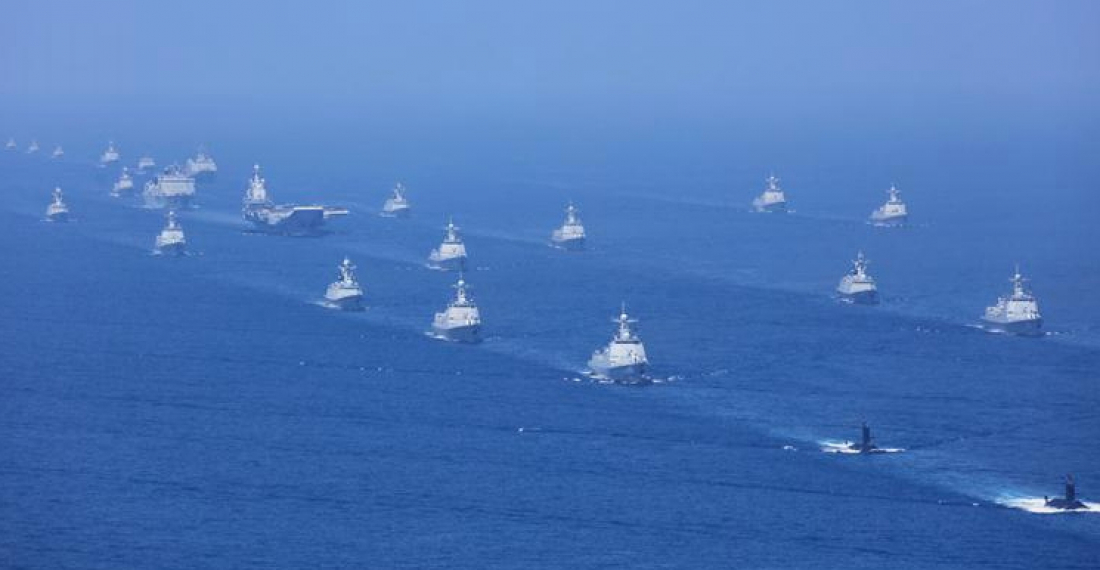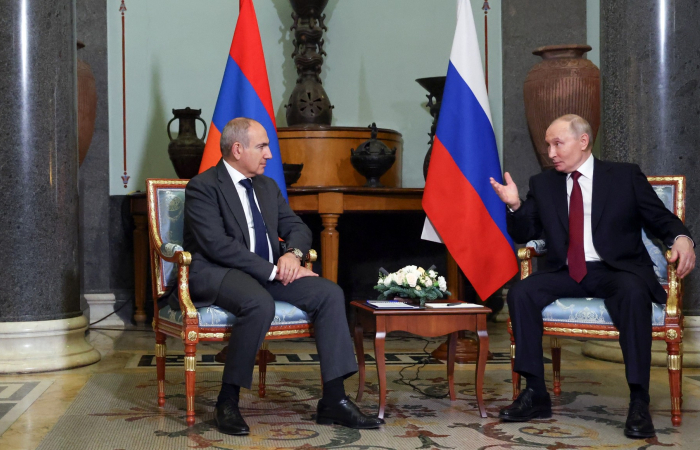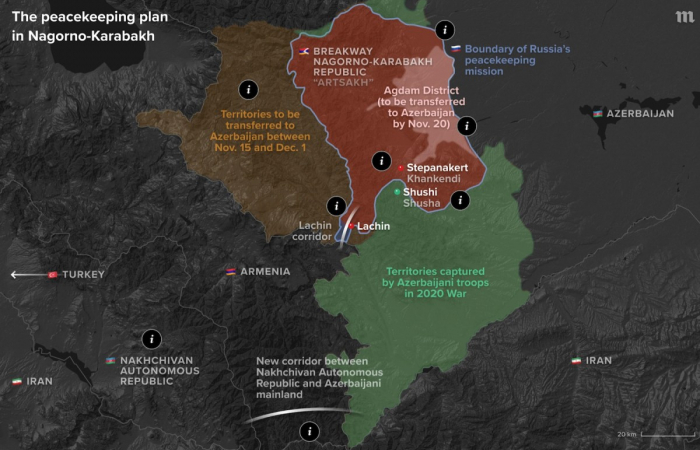"The current confusion in global geopolitics is quite different from the original Cold war. In the second part of the 20th century, the world was bipolar, as the US and Soviet Union were fighting each other. Many countries sought to avoid this confrontation through membership in the Non – aligned movement, but it never became a third pole. Now the situation is much more complicated. As the US and Russia are facing each other in a new rendition of a Cold war, the world is far from being bipolar. It may eventually end with a new bipolar system, but Russia will not be among the top two players. If bipolarity ever returns, the US and China will be the building blocks of that system, writes Benyamin Poghosyan in this op-ed for commonspace.eu. "The world comes closer to being a jungle again, and no safe garden exists where to hide. While great and middle powers are vying for influence and power, small ones should be cautious to avoid being wiped off the map", he argues.
The war in Ukraine brought Russia – West relations to the lowest point since the early Cold war years of the 1950s. Discussions about the emergence of Cold war 2.0 were prevalent among experts and the academic community well before February 24, 2022. The starting point was perhaps President Putin's famous 2007 Munich security conference speech. However, the current confusion in global geopolitics is quite different from the original Cold war. In the second part of the 20th century, the world was bipolar, as the US and Soviet Union were fighting each other. Many countries sought to avoid this confrontation through membership in the Non – aligned movement, but it never became a third pole. Now the situation is much more complicated. As the US and Russia are facing each other in the new rendition of a Cold war, the world is far away from being bipolar. It may eventually end with a new bipolar system, but Russia will not be among the top two players. If bipolarity ever returns, the US and China will be the building blocks of that system.
Meanwhile, as war rages in Ukraine, the US-China confrontation continues. When the Obama administration announced its 'Pivot to Asia" in 2011, it was a clear message that the US viewed China as the primary strategic competitor. The famous words of Obama about Russia being a regional power reflected the US perception that Russia was no longer a serious threat but rather a spoiler. The 2014 Ukraine crisis made some amendments to US strategic thinking, partly bringing US focus back to Europe. The 2017 and 2022 US national security strategies issued by the Trump and Biden administrations describe both Russia and China as the revisionist countries, seeking to undermine the existing international order. If China is described as the only country with the necessary resources to challenge the US global leadership in the long run, Russia is depicted as the major short-term threat. Thus, even if the "Cold war" metaphor is valid for 2022, perhaps we should speak about two simultaneous Cold wars; US – Russia and US – China.
This feature alone makes current geopolitics a messy place, but the reality is even more complex. As the US simultaneously seeks to contain Russia and China, other players have entered the game. They are not anti-American but do not want to fight Russia and China. India is perhaps the best example of this new, rising star in international relations. It develops strategic partnership with the US, is a member of QUAD, and simultaneously pushes forward strategic cooperation with Russia. India did not join anti-Russian sanctions and continues cooperation in economic and defense industries areas. There are other emerging players, too, such as Brazil, which seeks to keep a balance between "fighting elephants."
All these transformations occur within the bigger transition framework from a Unipolar to multipolar world order. Perhaps no one knows when and how this transition will end. Some experts argue that the US, through its struggle with Russia and China, wants to prevent this transition and bring back the Unipolar moment. Others believe that the US understands the inevitability of the emergence of a multipolar world, and all these hectic movements are attempts to secure a better position for the US in the future. The transition from unipolarity to multipolarity creates ambiguity and raises a sense of insecurity in the world. Meanwhile, the growing transnational threats, such as climate change, food insecurity, and pandemics, require joint efforts of all major players.
Another prominent feature of the current phase in world history is the growing significance of digital technologies. They have penetrated everywhere, from aviation to healthcare, from the military industry to smart home systems. It seems that digital technologies have the power to unite people and bring states together. However, in reality, along with real or perceived "Cold war 2.0," technological warfare is underway. The US imposed numerous sanctions to prevent the transfer of state-of-the-art digital technologies to China, launching so-called "Chip wars." The growing disruption of global supply chains and efforts towards "US-China economic decoupling" may create a "digital curtain," dividing the West from China and potentially from Russia, Iran, and other countries.
The establishment of the new "physical and digital iron curtains" has significantly decreased the speed of globalization, a phenomenon that swept the world in the 1990s and early 2000s. Instead of globalization, more and more pundits now speak about regionalization, the emergence of a few regions with different sets of rules and norms. Regionalization may result in rivalry for regional hegemony between "middle powers"; perhaps the Middle East is the best example of this feature. Turkey, Iran, and Saudi Arabia seek to maximize their influence, building ad hoc alliances and constantly manoeuvring.
The only constant thing in current geopolitics is permanent instability. The relative decline of the US does not allow Washington to lead the world as it did in the 1990s. Meanwhile, China is far from assuming a leadership role. Russia seeks to re-instate itself as a great power, and India speaks against the return of Unipolarity and the creation of new US-China bipolarity. After February 2022, Europe put aside considerations about Europe's strategic autonomy and rallied behind the US against emerging geopolitical threats. The world comes closer to being a jungle again, and no safe garden exists where to hide. While great and middle powers are vying for influence and power, small ones should be cautious to avoid being wiped off the map.
source: Benyamin Poghosyan is the founder and Chairman of the Centre for Political and Economic Strategic Studies in Yerevan.
photo: The Chinese Navy is one of the symbols of the country's ambition to become a global superpower able to balance the United States (archive picture)
The views expressed in opinion pieces and commentaries do not necessarily reflect the position of commonspace.eu or its partners.






